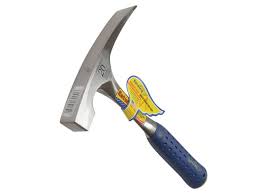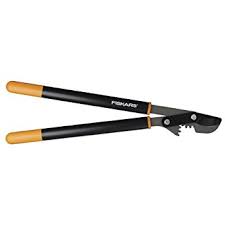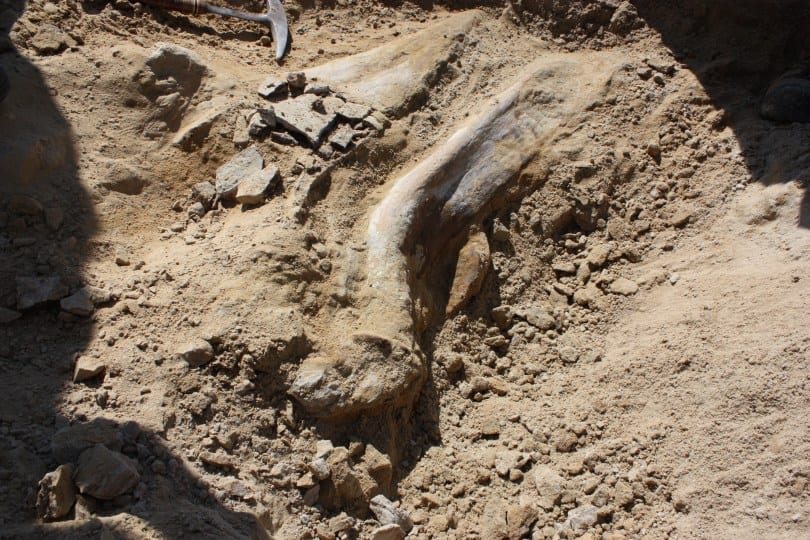For geologists, there are three standard field tools, a Hastings triplet magnifying lens by Bausch and Lomb, a Brunton compass, and an Estwing g-pick; all of which come in handy when I find an original stone monument. 🙂
Gene Kooper, post: 443929, member: 9850 wrote: and an Estwing g-pick
I use the Estwing 24-ounce bricklayer's hammer for general field work, as the flat blade is more efficient for digging in most soils than the sharpened pick of a geologist's hammer.
I still have the Craftsman geologist's hammer that I begged my parents to get me for my birthday when I was about 8 years old. I was in a rockhound phase, and that hammer was a prized possession. Although it's branded Craftsman and has a gray rather than blue rubber handle, I suspect that it came from the Estwing factory. It was made back in the days when Craftsman tools were of very high quality.
Jim Frame, post: 443932, member: 10 wrote: I use the Estwing 24-ounce bricklayer's hammer for general field work, as the flat blade is more efficient for digging in most soils than the sharpened pick of a geologist's hammer.
After 35 years of use the point on my g-pick is rather blunt. Nowdays, I use my pick mainly as a scarifier to loosen up fine materials that have filled in the center of a stone mound when rehabbing stone monuments that are found adjacent to the mound.
Rock hammers with a chisel end are more useful for paleontology field work like cleaving a shale along bedding planes when looking for marine fossils, plant leaves, fish, etc.
Gene Kooper, post: 443929, member: 9850 wrote: For geologists, there are three standard field tools, a Hastings triplet magnifying lens by Bausch and Lomb, a Brunton compass, and an Estwing g-pick;
Back in the day, when I was in the geology game, most of the people I worked with eschewed the Brunton in favor of the Silva Ranger with clinometer. We were in the dense coastal brush of the British Columbian Cordillera, where short sight lines made it impossible to take advantage of the Brunton's precision.
Those other things I agree with.
Mark Mayer, post: 443951, member: 424 wrote: Back in the day, when I was in the geology game, most of the people I worked with eschewed the Brunton in favor of the Silva Ranger with clinometer. We were in the dense coastal brush of the British Columbian Cordillera, where short sight lines made it impossible to take advantage of the Brunton's precision.
Those other things I agree with.
Mark,
As a geologist, I never did many Brunton and tape surveys. The Brunton was used to measure geologic structures such as strike and dip of bedding planes in sedimentary rocks, foliation and lineations in metamorphic rocks and platy flow structures in igneous rocks. Also, with a Jacob's staff, it worked well for measuring stratigraphic columns.
Nowdays, I prefer a Brunton and tape to a handheld GPS unit (never owned one). With the record information plotted on an aerial, I find them more useful in finding field evidence. While it is a matter of preference, I find it more useful to compare the ground features to the map than being led around by a handheld GPS unit telling me to go this way, oh wait you need to go back this way, on third thought you should be over there. Looking at the ground features keeps me focused on what I'm supposed to find.
I also use the Brunton to measure the "strike and dip" of stone monuments that are leaning so that I can compute their erect positions and the mirror is gneiss (er, I mean nice) for illuminating a stone face from different directions to better see the chisel marks.
I have 4 different sized hammers in the truck,,,,,no idea what brand any of them are. I just know they all pound things well.
MightyMoe, post: 443957, member: 700 wrote: I have 4 different sized hammers in the truck,,,,,no idea what brand any of them are. I just know they all pound things well.
No no no no how can you drive an 80d spike with precision using a cheap hammer?
Gene Kooper, post: 443955, member: 9850 wrote: The Brunton was used to measure geologic structures such as strike and dip of bedding planes in sedimentary rocks,
Again, in the Cordillera, sedimentary rocks are rare, and mostly localized (there are some significant coal fields), and any bedding planes are so churned up that measuring strike and dip is a real guessing game. Guys just didn't feel like spending 10x the money for something they couldn't take advantage of. No argument that Bruntons are fine instruments.
Dave Karoly, post: 443958, member: 94 wrote: No no no no how can you drive an 80d spike with precision using a cheap hammer?
One needs a new handle, I'm thinking maybe the Rolex gold one
MightyMoe, post: 443957, member: 700 wrote: I have 4 different sized hammers in the truck
Only four? Minimialist!
My hammer complement:
6 lb. sledge (long handle, generic)
6 lb. sledge (short handle, generic)
4 lb. sledge (generic)
3 lb. Estwing drilling hammer
2 lb. drilling hammer (generic)
24 oz. Estwing bricklayer's hammer
Lixie deadblow hammer
Chinese deadblow hammer (disposable, leaks shot)
There are probably a couple others that are buried under other stuff and that I've forgotten about.
I used to have a bunch of hammers then I had kids..
Mark Mayer, post: 443959, member: 424 wrote: Again, in the Cordillera, sedimentary rocks are rare, and mostly localized (there are some significant coal fields), and any bedding planes are so churned up that measuring strike and dip is a real guessing game. Guys just didn't feel like spending 10x the money for something they couldn't take advantage of. No argument that Bruntons are fine instruments.
Hey I can see that, Mark. I think I paid over $300 for my Brunton International in 1983. My alma mater is built on dipping sedimentary rocks. My first Geology 101 lab was a quick trip out the back of the building to see an upside down palm tree in an overturned sandstone bed. The geology department provided Bruntons so we could learn how to measure its strike and dip.
We then learned how to pontificate the universe based on a single outcrop of rock. 😉
I have quite a few hammers, but I make sure not to keep them in a bag because I don't want to encourage comparisons.
P.S. From today's Denver Post, a triceratops scull found last Friday while excavating the foundation of a public safety building in a Denver suburb. The photo shows an Estwing g-pick for scale. 🙂
Triceratops skull, skeleton dug up by workers building new Thornton police, fire station
Gene Kooper, post: 443969, member: 9850 wrote: Hey I can see that, Mark...
We were always on the hunt for precious metals and various sulphides. In that game the sight of sedimentary rock was not promising.
If I had a hammer...
[MEDIA=youtube]Rl-yszPdRTk[/MEDIA]
Jim Frame, post: 443963, member: 10 wrote: Only four? Minimialist!
My hammer complement:
6 lb. sledge (long handle, generic)
6 lb. sledge (short handle, generic)
4 lb. sledge (generic)
3 lb. Estwing drilling hammer
2 lb. drilling hammer (generic)
24 oz. Estwing bricklayer's hammer
Lixie deadblow hammer
Chinese deadblow hammer (disposable, leaks shot)There are probably a couple others that are buried under other stuff and that I've forgotten about.
Love the short handle shedge, I must confess I wasn't counting the hammer with the loose handle.
Jim Frame, post: 443963, member: 10 wrote: Only four? Minimialist!
My hammer complement:
6 lb. sledge (long handle, generic)
6 lb. sledge (short handle, generic)
4 lb. sledge (generic)
3 lb. Estwing drilling hammer
2 lb. drilling hammer (generic)
24 oz. Estwing bricklayer's hammer
Lixie deadblow hammer
Chinese deadblow hammer (disposable, leaks shot)There are probably a couple others that are buried under other stuff and that I've forgotten about.
I choose my hammers along functional lines, i.e.:
- hammer to break pavement = rock bar with chisel point and/or hammer drill
- hammers to prepare rebars (before driving) to accept aluminum cap = side of heavy sledge as anvil and short-handled sledge to flatten burs and deformations on top end of rebar
- hammer to drive rebar (with drive cap on it to prevent mushrooming) into tight drillholes in rock = long-handled sledge hammer
- hammer to drive rebar more than 5 ft. long into firm soils = tee post driver
- hammer to drive rebar into less resistant soils = short-handled sledge
- hammer to affix 2" aluminum rebar caps to rebar = short-handled sledge or 24 oz. hammer if travelling light on longer hike to spot
- hammer to stamp rebar caps with punch mark and lettering once affixed to rebar = 16 oz or 24 oz hammer
I would mag mount a Leica GS 14 to the roof top machine
and load into the machine controller a 20 foot square grid
and ask the operator to miss the big trees
He may leave the grid a times but try to stay on grid where possible
[MEDIA=youtube]qxfw66cFIdE[/MEDIA]
Note how careful he crossed the stream 0.93








